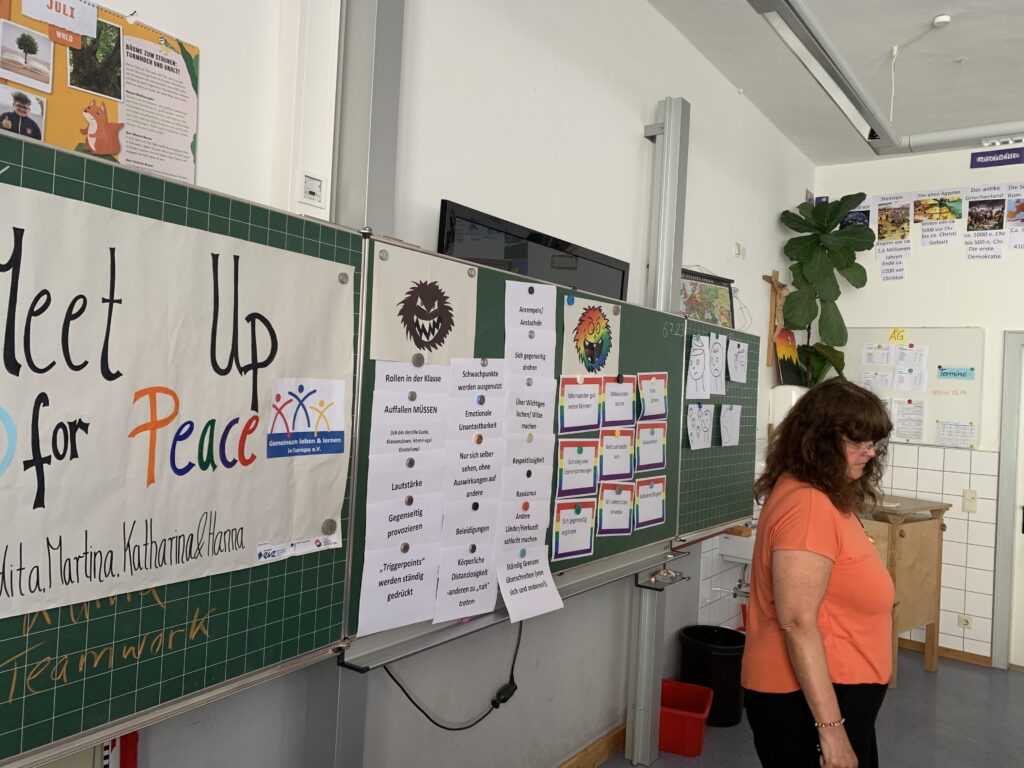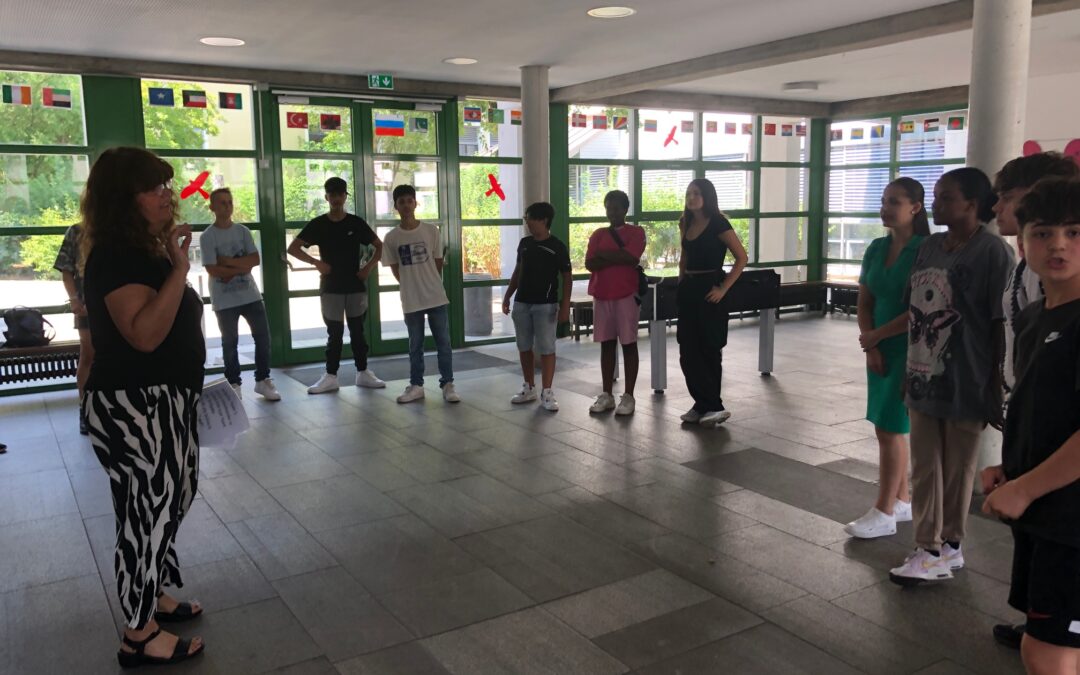By Hanna, volunteer from Passau
In our workshop of „Meet up for Peace“ in Nikola School, we first covered the broad topics of peace and war and conflict in the first hour. The point was for the students to share when and how they notice that peace or war is happening at different levels of our society and what it means to them personally. We restructured the following session to fit the needs of the participants, in which we were signaled how strongly entrenched difficult role models as well as behaviors are. We took a good monster and a bad monster to represent their behaviors, role models and ways of dealing with each other, through which we discussed and reflected together on the issues that arose. Exercises that we conducted took place in small groups and the focus was on the behavioral patterns as well as interaction with each other. At the end of the workshop, the last session consisted almost entirely of interactive methods that contributed to class cohesion, language, concentration and development of soft skills, which were then reflected on together with the class.

Since we quickly realized that the students needed to work on and be confronted with basic skills and manners for the first time, we changed the approach so that the concept would be adapted to their needs. It was very exciting to see how they partly blossomed among themselves, got out of their stuck roles and accepted the topics addressed. A positive development could be seen more and more from hour to hour, even if it was difficult to maintain the concentration of the participants. Especially when we as a team addressed how we assessed their behavior among each other and what positive sides we also saw, we noticed how much potential was lying dormant in them. It was new for them to be confronted with how they treat each other and the extent this can have on them personally and their environment. The exercises we did with them were very well received in some cases and I had the feeling that although they were aware of their behavior, which increasingly consists of insults, aloofness, carelessness and emotional intangibility, they often do not know how to act and proceed differently, because this is already so strongly anchored in them. Thus, our method of working together first in small groups and then together as a class, speaking in I-messages, looking for other ways of speaking, consciously listening to each other and working together worked well in some respects. It was important to start with the individual. I was also particularly struck by how much the students acted against each other instead of with each other in group games. However, when we reflected together afterwards, the understanding was there and I am sure that we have triggered some things in them, especially with regard to team work. In addition, it was important that we pointed out to them in our method the effects of their behavior and tried to show them other ways of communication and manners.
Personally, I enjoyed working with the different characters and seeing more and more of their motivations and ways of thinking. In addition, I noticed more and more how individuals blossomed and really took the topics discussed to heart, even if they did not openly reveal this in class. This was especially evident in the exercise where each person was asked to write on a piece of paper what bothers them about others, write this down with „I“ messages, and convey how they would like to be treated. Add to this the fact that many did not know why they were so said trapped in their behavior and only by talking to us realized this and perhaps address it better in the future. Furthermore, it is always something different when neutral persons in a class address sensitive issues that confront you especially on an individual level or class teachers and teachers. It was exciting to see how the roles are assigned and how many people in the class perhaps don’t want to be involved and therefore stay out of it. Because we as a team had the positions of the outsiders, the students were curious and more willing to participate. I liked to show them the positive side of themselves and to encourage them that their opinion and their feelings count as well as to encourage them to stand up for them and to be with each other instead of against each other.
A particular challenge was to get the attention and concentration of the students. As mentioned earlier, we introduced a good monster and an evil monster to the class, representing their ways with and to each other. They increasingly allowed and encouraged the bad monster by goading each other, crossing boundaries, insulting, being loud, showing physical aloofness, being disrespectful and sometimes homophobic and racist, and more. However, this is directly followed by the opposite, namely what surprised me the most. This was again the good monster, which was expressed when they talked to each other in small groups, listened to each other and complemented each other, when they supported each other in tasks and occasionally also took each other into protection. In addition, how the cohesion was strengthened when they mastered a task together and the fighting spirit emerged in them. Furthermore, it was nice to see how many students consciously took up the topics and reflected more and more on themselves in relation to themselves and others. As a result, a steady small improvement could be seen after each session, from which it can be concluded that you have to start small to really get through to people in a sustainable way and make a difference in the longer term.
From these experiences I take with me for the future that it is of high importance to start small and to start with the individual. It is important to take the students out of their fixed environment of the class to show them that it is also possible to do things differently and that they have more freedom for themselves without the pressure of having to fulfill their assigned role. In addition, it is important to see what capacities they bring with them and to adapt both the concept and the approach accordingly.

